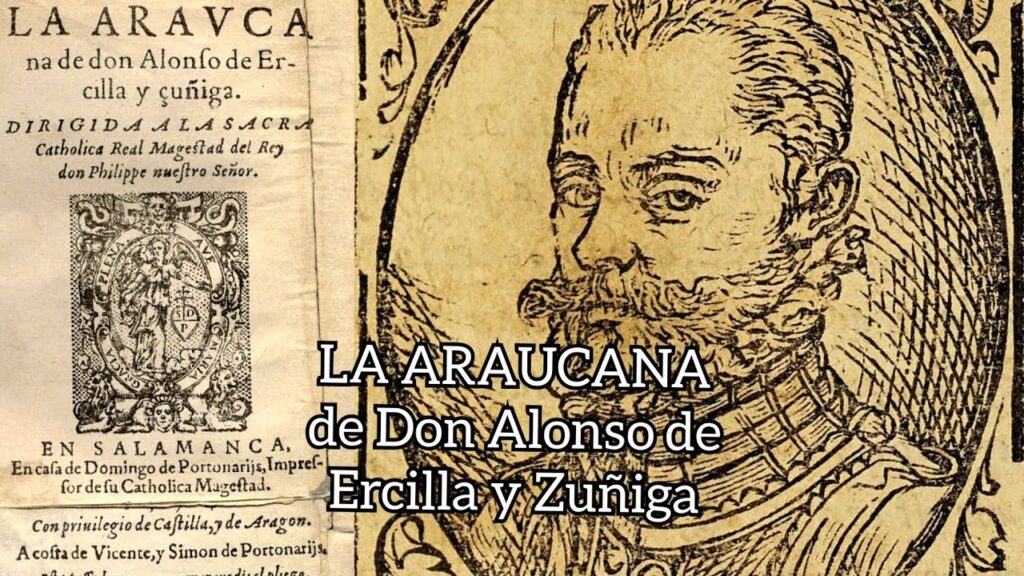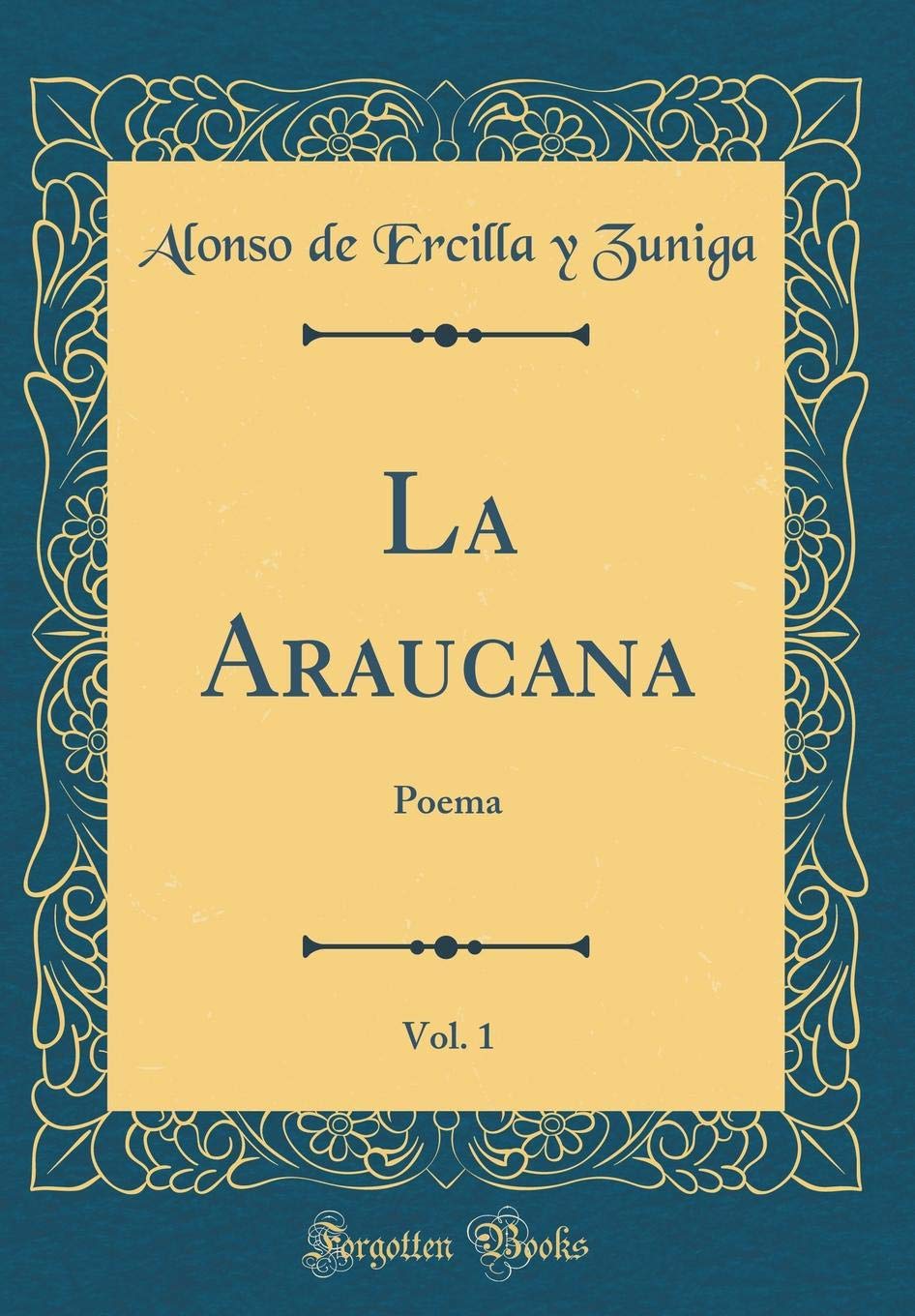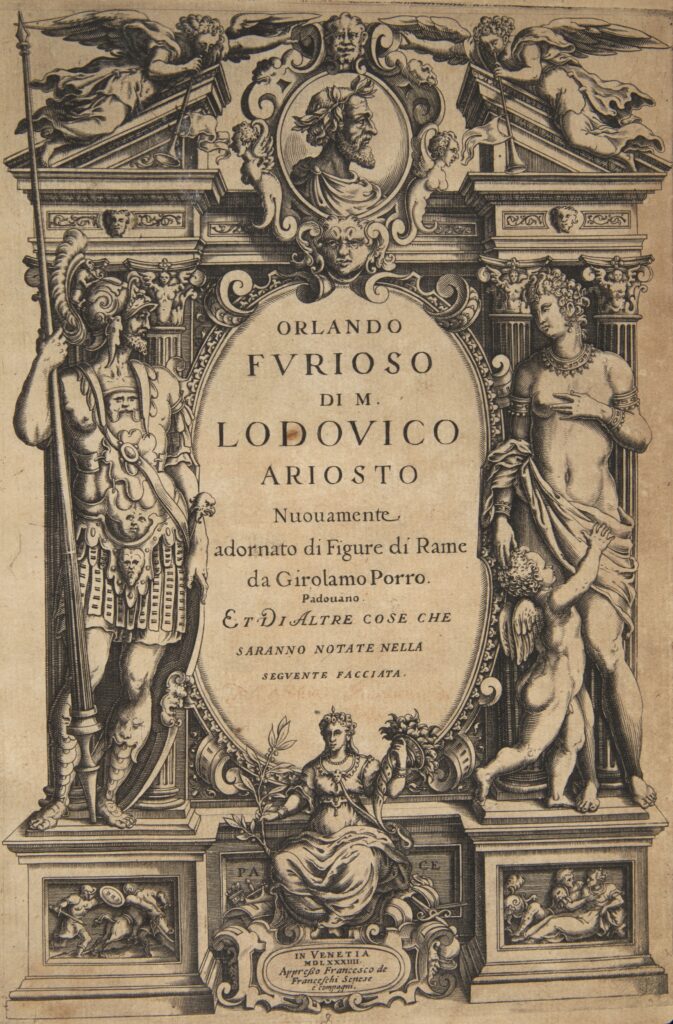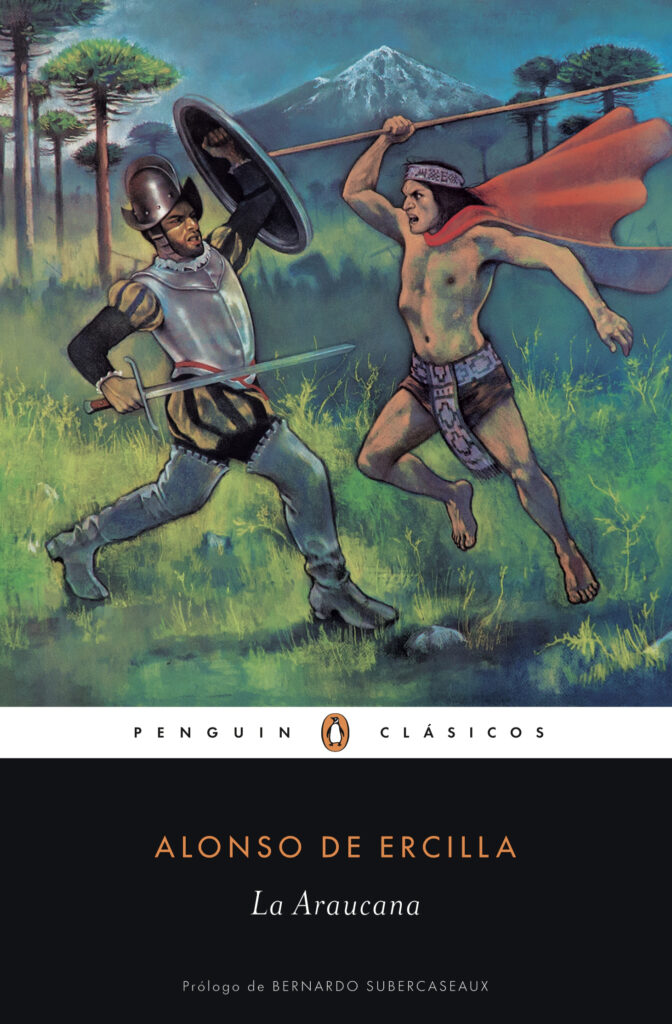La Araucanian, is a story that tells about the traditions and experiences of the caciques and commoners in times of battle, where its population is distinguished by being a fighting people, tenacious, strong for work, and with the ability to withstand inclement weather and moments of hunger

La Araucana: Historical content
The the literary genre the Araucana it is poetry. La Araucana is a literary work that takes place in the Homeric poem of its author Alonso de Ercilla y Zúñiga, who was present at the events, for which he recounts the historical events that lead to the conquest of Chile, and that was promoted by Pedro de Valdivia, military and Spanish conqueror.
The Araucanian resistance was undertaken by the Mapuche people, an Indo-American who lives in Chile and Argentina, and was led by a young warrior named Lautaro, (Leftraru), who, despite his grandfather's warning, crossed the Great River, Bío Bío, to lend support to the Picunche, a name assigned to pre-Hispanic groups that spoke Mapudungun, who lived between the Bio-Bio Rivers in the so-called Central Zone of the Mapocho Valley.
According to the stories of the author himself, who was present and participating in the acts of struggle, and being in charge of writing his own hands, the poem was captured while he was in Chile, using to make it possible that it will be captured in some aside fragments of tree bark and other rough products.
Alonso de Ercilla y Zúñiga was sharing with the court of Felipe II, who on one occasion acted as a page, before the supremacy of the monarchy, in addition to having an appreciable training and education, which was above many conquerors. We recommend you read The student from Salamanca
Later, Ercila returns to her native Spain. The work was published in Madrid, in three volumes, which was executed for two decades. Namely, the first volume was edited in the year 1569, the second volume edited in the year 1578, and the third volume edited in the year 1589. It was considered a masterpiece by readers who were drawn to such a story.
Although the transcendence of the events in the face of the multiplicity of narrations contained in the work has a similar character, it is qualified as one of the most express narrations that speak about the Conquest, which during its time was known as a reliable history of the events in Chile.
La Araucana was made up of a host of Spanish writings that detailed the New World for the knowledge of the different followers of European reading, contained in Los Naufragios de Cabeza de Vaca, which narrated about the exploits of its literary in North America; as well as the Authentic History of the Conquest of New Spain by Bernal Díaz del Castillo, the Spanish conqueror, who propagated the surprising collapse of the Aztec Empire.
However, the Araucana, stood out among these texts qualified as the first work of liturgical literature, offered in its content with clear artistic interests.
After the appearance of the work La Araucana, many other works appeared that talk about American aspects with the intention of repeating its Homeric style, such as: La Argentina, Arauco domado, and Purén indómito, among others. In the course of time and with the resurgence of these texts, the separation between the legend and the account of historical events increased.
[su_note]The different literary, preferred to transport the topics related to the European Renaissance to extravagant American environments. So, motivated by this, a large number of the poems refer to pronouncements of a moral nature, love in its romantic splendor, or purely Latin themes, rather than referring to The Conquest.[/su_note]
Argument
El argument of the araucana, expressed in a poem, begins with the description of its people and the different cultures and traditions of Chile, just as it describes the arrival of the Spaniards, it continues with one of the most beautiful songs: the advice of the caciques to choose the captain. In other words, the argument of the Araucana is summed up in the first stage that took place during the conquest of Chile. Specifically, it addresses the armed conflict that occurred in Arauco between the Spanish conquerors and the Mapuche or Araucanian natives.
In the first part, it is narrated when Valdivia attacks Tucapel, which is a commune and city of Chile, and as a consequence it suffers enormous losses. The revenge of the Spaniards, and the arrival at the conception, disputes between the Araucanians and the Spaniards, and the celebrations for their dominions.
In the second part of the araucana argument, begins with the arrival of the Marquis of Cañete, Don García Hurtado de Mendoza, in Peru. Also in this part of the work, the Araucana, requires support from the Spaniards; Villagrán lashes out at Lautaro, leading him to have heavy losses. New Araucanian attacks arise and the event of San Quintín begins, in an alternate way to recount what is happening these days, with the Spanish in Europe. Invasion of the Araucanians and retreat by the commune of Tucapel.
Caupolicán, a Mapuche touch who led the resistance of his people against the Spanish conquerors, is very aware of his people, as well as of the beautiful Tegualda, the daughter of chief Brancol, who appears in the poet in a melancholic way, and finds her husband among the deceased.
The Spaniards cut off the hands of the Indian Galvarino, who makes various speeches in the assembly to motivate the Indians to take revenge. There is also the challenge of Caupolicán towards the Spanish, a fight takes place where the Araucanians are not successful. It is also observed in this part, the obfuscation and death of Galvarino, an event in the garden and in the presence of the magician Fitón.
In the third part of the work, the poet reflects on many cities in Spain, Africa, Asia and America, the encounter with the beautiful Glaura, who tells Ercilia of her misadventures, new battles occur and the adversity of the Indians.
The participation by Andresillo, advised by Caupolicán, returns to combat and as a result they are defeated. The event of Dido's story. The presence, prison, punishment and death of Caupolicán, the brave Indian, who prior to his death receives baptism. The Spaniards with great difficulties return to Peru.
[su_note]In this work La Araucana, it is clearly evident that the narrator participates in the plot, an aspect that was not common within the Spanish cultured literature. It is a work that contains historical events, such as the arrest and execution of Pedro de Valdivia, as described in previous paragraphs, the death of the caciques Caupolicán and Lautaro.[/su_note]
Similarly, the background of the poem allows it to be analogous, and on many occasions the writer feels distressed at this event. Reason why wonderful facts are added to the poem, such as the case of the fortune teller Fitón, who teaches Ercilla through a crystal ball, representing to the earth an event in the future that will happen in Europe and the Middle East, called the battle of Lepanto.
After Ercilla's return to Spain, the book was published in Madrid in three parts over two decades. The first volume was published in 1569; the second, in 1578; and the third, in 1589. The book obtained, then, a considerable success between the readers.
Although the historicity of many of the stories that appear in the work is relative, it is considered one of the greatest testimonial writings about the conquest, and in its time it was usually read as a true chronicle of events in Chile.
A recommended article on poems can be obtained by clicking on Prose poems
Historic context
Now, it is important to be clear In what historical context does the work La Araucana appear?. As we have mentioned, from the pen of its author, who was an active witness of these events, the work was produced during his stay in Chile. In order to write these events, Ercilla used the bark of the bushes and other rustic implements. Also, he had been academically trained much more than other conquering peers.
He was part of the reinforcement expedition led by the new governor García Hurtado de Mendoza.
Use of stylistic language
The Italian poet, known as Ludovico Ariosto, with his literary work Orlando Furioso, has a great influence on the existence of narration in Araucana. As has been mentioned, in this charming work, the narrator has an active participation in the plot. The matter of the metric of the work is the stanza called eighth real, which rhymes eight hendecasyllable verses with the Spanish metric scheme, known as: ABABABCC, and is also shown in the following:
Caciques, State Defenders, (A)
greed to command
do not invite me (B)
despite seeing you pretenders (A)
of something that was due to me so much; (B)
because, according to my age, you see, gentlemen, (A)
that I am to the other world of departure; (B)
more love than ever, I have shown you, (C)
to advise you well has incited me. (C)
The Araucana.
The literary work is part of the subgenre of the cult Homeric poem, an element typical of the beginning of contemporary times. Especially, the work La Araucana was contributed by what has been named in the Canon of Ferrara, which refers to two learned Homeric poems, embodied in Italy, namely:
[su_list icon=”icon: check” icon_color=”#231bec”]
- Orlando Innamorato, by Matteo Maria Boiardo. Year 1486
- Orlando Furioso, by Ludovico Ariosto. Year 1516. [/su_list]
The encounter that exists between the poems of the Ferrarense style and the work of Ercilla, does not end with the use of the same style of poem, such as the epic and chivalrous theme, there are also other coincidences, such as the fact of using the octave as poetic meter.
Finding out about the influences that have intervened in the work La Araucana, we add that as far as the two Orlandos are concerned, they were engaged in the work of Dante's Divine Comedy, that in the year 1321, who created the Homeric poem worship, crafted with a religious theme.
We have that the work La Araucana is contained in the renewal of Spanish poetry with Italian styles, which are born as a result of the energetic Hispanic political and military interference, which was carried out during that time in the Italian peninsula. For what Ercilla, had moved to Italy, to act as a page of the future King Felipe II, which allows him to conform with the poems of the Canon of Ferrara, as well as other writers of the Italian Renaissance.
In addition, the Homeric poem was cultured, considered fashionable for that time. He foresaw the publication of La Araucana, other imitators of the Ferrarense poets are exhibited everywhere. For this reason, a man of Portuguese origin known as Luís de Camões, published his work entitled Los Iusiadas in the year 1572. Then in the next few years, Torquato Tasso continued with his work Jerusalem liberated from the year 1575, including Jaime IV, king of Scotland, was motivated to capture the work Lepanto in the year 1591.
However, it is good to note that the origins of epic poetry appear from classical antiquity, where the Italian Renaissance practice had the luxury of emitting resonance for that time. For this reason, La Araucana is committed to the Greco-Roman Homeric poems.
Likewise, it is made known that the Araucana contained an aspect of a glorious poem linked to new events. Reason why the habit of a legendary Roman work was generated, namely: the Farsalia of Lucanus, who recounted the events of a civil war, between Julius Caesar and Sextus Pompey, with a notorious desire to create a reliable history.
Objective and ideology
The work La Araucana, is found within the context of the recovery of value dispersed by the Spanish soldiers in a remote and forgotten battle. Among the soldiers of the war thrown into oblivion, was Ercilla himself, which is why it is a redemption equally in his own personal behavior.
[su_note] Then it can be evidenced being the main stated and cited objective. But, in general, it is intended to show in the content of the work that its hidden motive is the vindication of the symbol of the Indians, despite the fact that this estimation of the indigenous can also be elucidated as a suggestion of self-worth on the part of the Spaniard who dominates.[/su_note]
Reception of the work
La Araucana, is one of the literary works, that the illusion on the part of Miguel de Cervantes, protected in the act of setting fire to the books of chivalry, which is evidenced in chapter IV of Don Quixote de La Mancha. The work that concerns us, intervenes with this class of works, which have a deliberate style as far as literature is concerned, in addition to including certain wonderful occurrences.
The French philosopher and writer François-Marie Arouet, better known as Voltaire, who dedicated a good part of an essay to the work La Araucana, who contemplated that the poem managed to be at the top exalted in the proclamation of chief Colo Colo of el Canto II, which is usually above the similar event starring Nestor in the Iliad.
Despite, and in a good way, Voltaire gave his opinion that Ercilla suffered from literary moderation, which led him to get confused in extremely tedious passages.
The publication of the work La Araucana, led to the person who acted as Viceroy of Peru, the well-known García Hurtado de Mendoza, feeling diminished in the narration, for which he asked the Chilean poet named Pedro de Oña for another Homeric poem, entitled Arauco Tamed in the year 1596.
The second poem was rated as inferior to Ercilla's poem, being the first poetic work published by a writer from Chile. In the Chilean nation, La Araucana is generally considered an incorrect work, as it is the last epic poem that recounts the genesis of a country, due to the form of classic poems such as Aeneid, or the songs of the medieval feat.
However, Homeric poems with national sentiment were written between the 1602th and 1835th centuries, such as: La Argentina y conquista del Río de la Plata by Martín del Barco Centenera, which were published in 1848; as well as the glorious native Finnish poems Kalevala, which was published in the year XNUMX, by the folkloric compilation of Elías Lönnrot, a Finnish doctor and philologist, as well as The Stories of Ensign Stål, an epic poem written in the year XNUMX, by the Swedish author Finn Johan Ludvig Runeberg, the poet of Finland.
[su_note]It is worth noting that the Homeric poem La Araucana, being national and representative for Chile, is mandatory for basic education students to know its content.[/su_note]
[su_note]The Chilean composer and musicologist, the well-known Gustavo Becerra-Schmidt, being one of the most exceptional of his nation, in 1965, managed to arrange an oratorio based on La Araucana, which he baptized with the same name. With the characteristic of introducing musical instruments typical of the Mapuche people, inserted in the symphony orchestra.[/su_note]
Likewise, the literary expert known as Álvaro bisama, states in his work entitled One Hundred Chilean Books, that the work La Araucana, is the beginning of Chilean literature, considered as a lying book, however, it cannot be rejected, especially based on the principle that was selected by Cervantes.
Poem Structure
This attractive work La Araucana, is composed of 37 songs with stanzas, with the metric of the real octave, and in each Song a special topic is mentioned, then a summary of the Araucana:
Part
In this first part we will be speaking briefly from Canto I to Canto XV.
Canto I: It speaks of the people and description of the Chilean province, and especially of the state of Arauco, its traditions, and war practices, it also makes known the entry of the conquest by the Spanish until Arauco rebelled.
Canto II: It deals with the dispute between the caciques of Arauco for the option of electing the captain general, and what was done through the cacique Colocolo, with the income that the barbarians falsely executed in the Tucapel stronghold, and the battles they had with the Spanish.
Canto III: Valdivia, in the company of a few Spaniards and a few friendly Indians, goes to the house in Tucapel to make amends. The Araucanians assassinated these Spaniards on a path with a narrow passage, getting rid of the contest, where he and all his companions died, thanks to the support and effort of Lautaro.
Canto IV: Fourteen Spaniards arrive, to unite with Valdivia against Tucapel, they meet Indians in a covert, Lautaro arrives with reinforcement; seven Spaniards and their friends die, others fled.
Canto V: The battle between Spaniards and Araucanians takes place on the slope of Andalicán, due to the vivacity of Lautaro the Spaniards were defeated and killed, with the company of three thousand Indians in solidarity.
Canto VI: The battle continues, strange deaths occur that the Araucanians defeated their enemies, they had little mercy with the children and women, they murdered them with machetes.
Canto VII: The Spaniards arrive at the city of Concepción devastated, they narrate the loss of their companions, and since they did not have much strength to protect the city, most of them were women, children and the elderly, they move away towards the city of Santiago . It tells of the looting, burning and destruction of the city of Concepción.
Canto VIII: Caciques and important lords of the general council join in the Arauco Valley. They assassinate Tucapel, and the cacique Puchecalco, while Caupolicán arrives with a strong army at the imperial city, founded in the Cautén valley.
Canto IX: The Araucanians arrive at the main city with a powerful army. They surround their territory, due to the news received that the Spaniards were in Penco rebuilding the city of Concepción, they go for the Spaniards, a gigantic war breaks out.
Canto X: Happy the Araucanians for the triumph, they authorize a big celebration, many people attend, as foreigners and natives, many differences arose.
Canto XI: The celebration and the differences are over, and while Lautaro walks towards the city of Santiago, he triggers a strong detonation, the Spaniards arrive towards him, they have a strong fight.
Canto XII: Lautaro locked in his fort, does not want to continue with the triumph. Marcos Veas talks with him, so Pedro Villagrán understands the danger of the matter, raises his battlefield and leaves the place. The Marquis of Cañete arrives in the city of Los Reyes in Peru.
Canto XIII: The Marquis of Cañete is punished in Peru. Men arrive from Chile to ask for help. The same is revealed as Francisco de Villagrán, guided by an Indian, goes by Lautaro.
Canto XIV: Francisco de Villagrán, arrives silently at night. During dawn Lautaro is assassinated. A pitched battle begins.
Canto XV: The battle ends, all the Araucanians were killed. They also narrate about the boats that sail from Peru to Chile.
Part Two
In this part there will be a summary of the Cantos from XVI to Canto XXIX.
Canto XVI: The Spaniards enter the port of Concepción and the island of Talcaguano; the general council of the Indians in the Ongolmo Valley. The difference between Peteguelen and Tucapel.
Canto XVII: The Spaniards leave the island, build a fort on the Penco hill, the Araucanians arrive to attack them.
Canto XVIII: Don Felipe assaults San Quintín.
Canto XIX: They narrate the assault of the Araucanians on the Spaniards in Fort Penco. Gracolano's attack against the wall. The contest between sailors and soldiers.
Canto XX: The retreat of the Araucanians, with the loss of many companions. Tucapel, very wounded, flees. He narrates Tegualda to don Alonso de Ercilla, the strange and sad process of his history.
Canto XXI: Tegualda, finds the body of her husband, and with suffering and tears takes him to her town, to bury him.
Canto XXII: The Spaniards enter the state of Arauco, a strong contest takes place.
Canto XXIII: Galbarino, reaches the Araucanian Senate. He prepares a speech with which many change their minds. He describes the cave where Phyton was and its contents.
Canto XXIV: It speaks of the strong naval battle.
Canto XXV: The Spaniards settle in Millarapué, an Indian sent by Caupolicán arrives to challenge them, a strong battle begins.
Canto XXVI: It speaks of the end of the conflict, and the withdrawal of the Araucanians, the death of Galbarino. The same is narrated about the garden and stay of the sorcerer Fitón.
Canto XXVII: Many provinces, mountains, important cities and wars are described.
Canto XXVIII: The misadventures of Glaura are recounted. The Spanish attack the Quebrada de Purén, a strong battle takes place.
Canto XXIX: The Araucanians enter a new council, they intend to burn down their haciendas.
Third part
Cantos from XXX to Canto XXXVII are briefly mentioned.
Canto XXX: The end of the battle between Tucapel and Rengo.
Canto XXXI: Andresillo, tells Reinoso, of what Pran has agreed.
Canto XXXII: The Araucanians attack the fort and are devastated by the Spanish.
Canto XXXIII: Don Alonso, continues the trip sailing until it reaches Biserta.
Canto XXXIV: Reinoso and Caupolicán, talk that you agree that they are going to die, they want to become a Christian. Caupolican dies
Canto XXXV: The Spanish enter, claiming the new territory.
Canto XXXVI: The cacique leaves his boat to land, gives the Spaniards what is necessary for them to undertake their journey.
Canto XXXVII: In the last canto, war is narrated as a right of the people, and it is stated that King Don Felipe maintained the sovereignty of Portugal, together with the requests made by the Portuguese to argue their weapons. once described the summary of the book the Araucana We will address those related to the continuations.
Continuations
As has been pointed out Arauco tamed by Pedro de Oña, who produced his own reproduction; the indomitable Purén of Alférez Diego Arias de Saavedra, it is worth mentioning Diego de Santisteban, who arranged the Fourth and Fifth part of La Araucana, around 1597, as well as Hernando or Fernando Álvarez de Toledo, writer from Araucana, another cultured feat he writes in real octaves, which has been available to readers, in pieces mentioned by the historian Alonso Ovalle.






